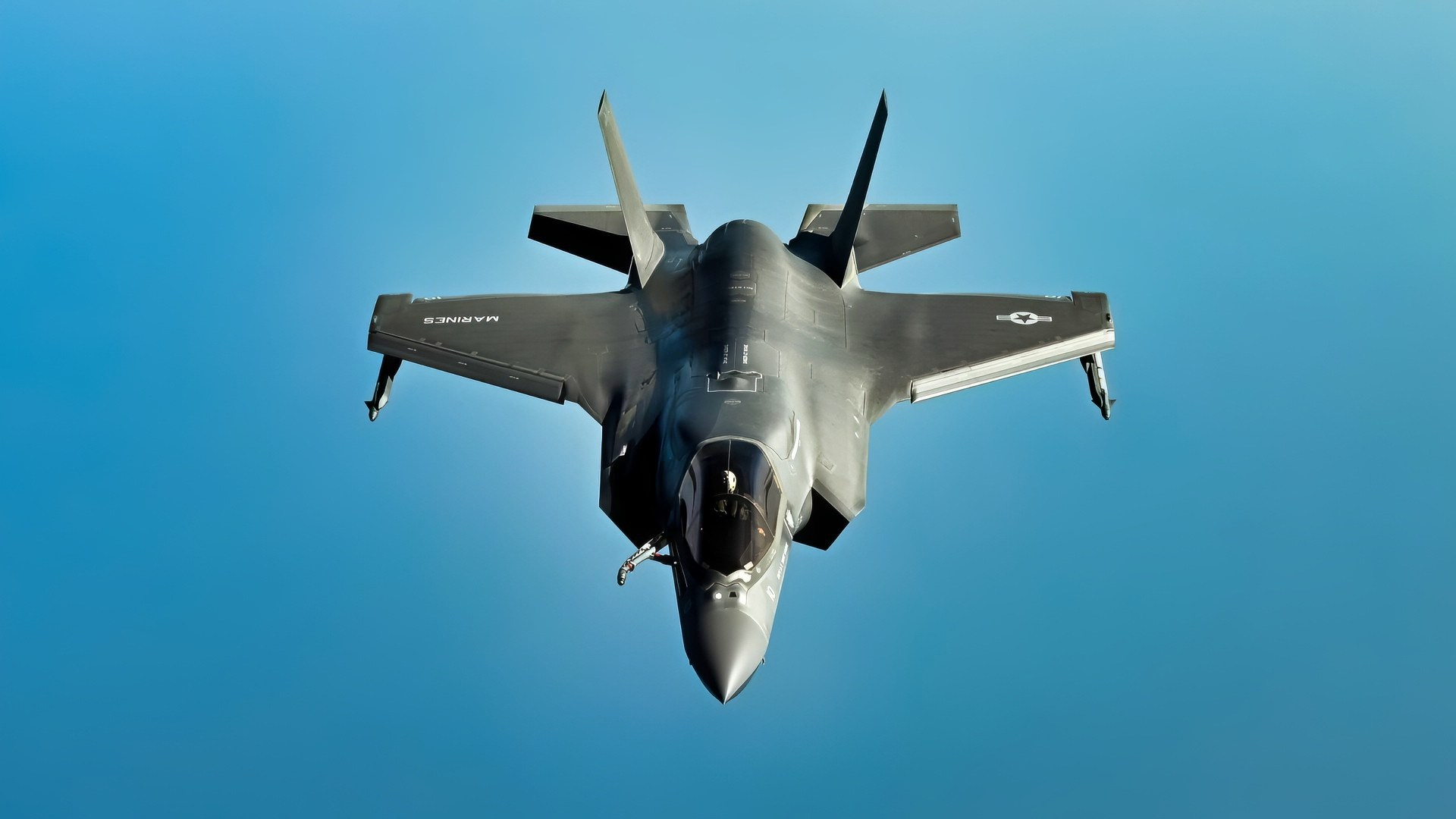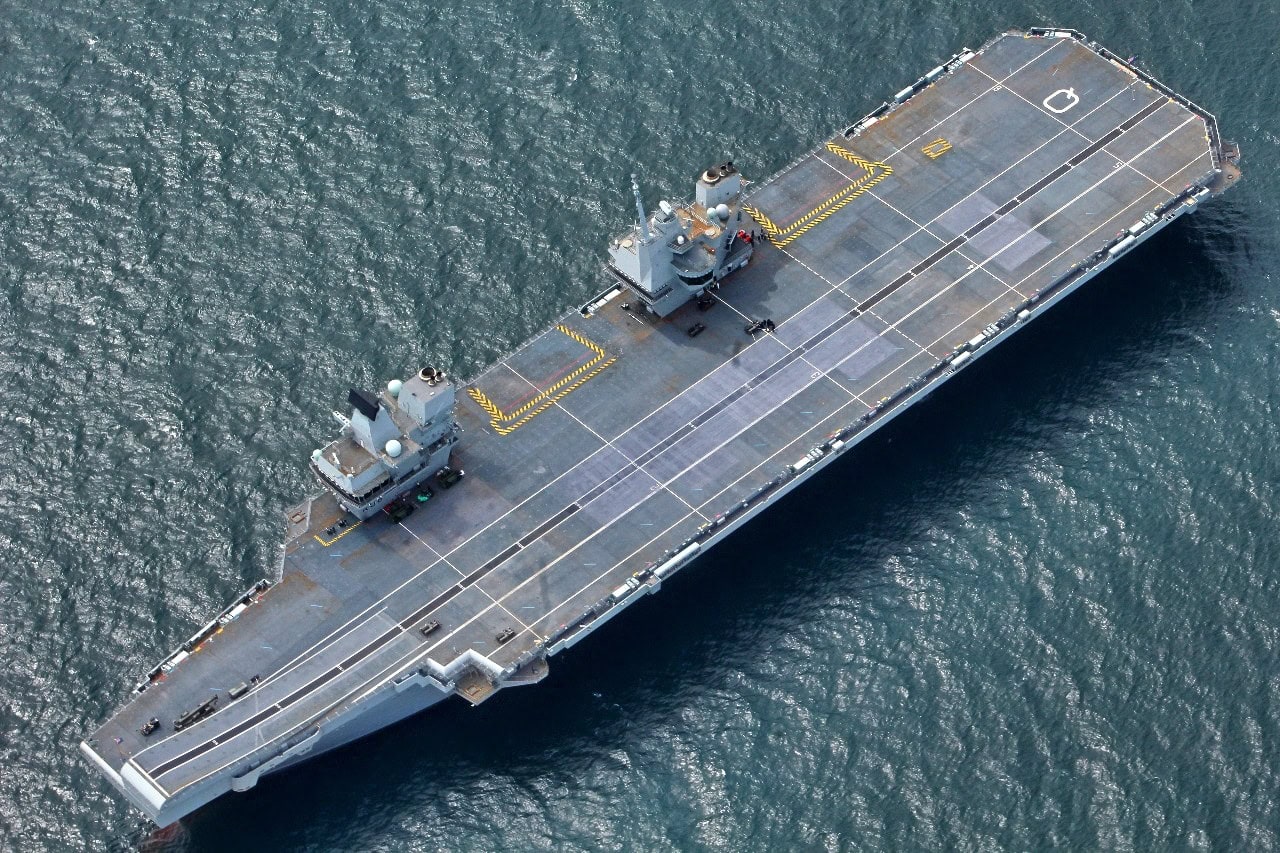Key Points and Summary – Britain’s Queen Elizabeth–class carriers launched with sky-high promise—and early stumbles.
-Cost overruns, mechanical faults, and a thin F-35B fleet fed doubts about value and readiness.

HMS Prince of Wales and HMS Queen Elizabeth pictured at sea for the first time. Image Credit: Royal Navy.
-That narrative is shifting. After 2021’s Indo-Pacific run, 2025’s Operation Highmast signals growing confidence, deeper allied integration, and a maturing strike wing. The ships now anchor UK power projection from the North Atlantic to the Indo-Pacific, including cross-decking with U.S. Marines.
-Still, availability rates and limited F-35B numbers cap surge capacity, while critics argue carriers face rising missile and drone threats. If the UK sustains sorties, readiness, and funding, these big decks can finally earn their keep.
Are Britain’s Queen Elizabeth-Class Aircraft Carriers Making A Comeback?
When the United Kingdom’s two Queen Elizabeth-class aircraft carriers first entered service, they carried with them high expectations.
They were the largest warships ever built for the Royal Navy, intended to project fifth-generation strike capability, enhance interoperability with allied forces, and ensure the success of British maritime strategy.
But despite the high hopes, the project’s early years were marred by failures.

HMS Prince of Wales Royal Navy (Queen Elizabeth-Class Aircraft Carrier). Image Credit: Royal Navy.

ATLANTIC OCEAN (Aug. 8, 2017) The Royal Navy aircraft carrier HMS Queen Elizabeth II sails in formation alongside the Nimitz-class aircraft carrier USS George H.W. Bush (CVN 77) during exercise Saxon Warrior 2017, Aug. 8. Saxon Warrior is a United States and United Kingdom co-hosted carrier strike group exercise that demonstrates interoperability and capability to respond to crises and deter potential threats. (U.S. Navy photo by Mass Communication Specialist 3rd Class Tristan B. Lotz/Released)
There were mechanical problems, system delays, and significant cost overruns that led critics to label them a national embarrassment.
Now, however, some signs are emerging that the carriers are finally overcoming those initial teething problems: major deployments are underway, the strike wing is starting to mature, and the United Kingdom is finally asserting itself as a significant carrier-enabled power with more confidence than ever.
A Troubled Start
From the outset, the program suffered.
The two carriers were initially budgeted at around 4 billion GBP, but by 2013, the contract had risen to around 6.2 billion GBP.
Commissioning of the lead ship, HMS Queen Elizabeth, occurred in December 2017, and its sister ship, HMS Prince of Wales, was commissioned in December 2019. But mechanical issues quickly followed, including propulsion failures, power integration problems, and limited sortie rates.
There was also a shortage of operational F-35B Lightning jets, raising doubts about whether the carriers could deliver everything they originally promised.

A U.S. Marine Corps F-35B Lightning II resumes a combat air patrol after aerial refueling with a U.S. Air Force KC-135 Stratotanker over the U.S. Central Command area of responsibility, Sept. 19, 2025. More than a fighter jet, the F-35’s ability to collect, analyze and share data, is a powerful force multiplier that enhances all airborne, surface and ground-based assets in the battlespace. (U.S. Air Force photo by Senior Airman Keegan Putman)
One incident in 2024 saw Queen Elizabeth sidelined ahead of the major Steadfast Defender exercise because of a shaft-coupling fault.
And then, the Prince of Wales suffered a similar breakdown in 2022. The incidents prompted widespread criticism, with many analysts noting that the carriers spent as much time in maintenance as they did at sea.
The result? Skepticism about the value-for-money the ships offered, and questions about the strategic logic of building large carrier strike groups.
In 4 Words: On the Comeback Trail?
That said, the record is now shifting— and the carriers could soon become assets that make the British Royal Navy proud.
The first significant deployment of the UK Carrier Strike Group (CSG) under the carriers took place in 2021, when HMS Queen Elizabeth led the Operation Fortis deployment to the Indo-Pacific—the first major power-projection deployment by the UK since the era of the Invincible-class carriers.
More recently, the 2025 deployment, codenamed Operation Highmast and led by HMS Prince of Wales, began in April 2025.
It spans the Atlantic via the Mediterranean into the Indo-Pacific and involves several allied navies. The UK’s stated aim includes declaring the Queen Elizabeth-class carriers and all their constituent parts fully operational, signaling growing confidence in the platform.
Now, the aircraft carriers are ready to serve their intended purposes.
The carriers now operate alongside F-35B jets and have integrated with allied naval aviation for joint deployments.
Writing for this outlet, Kris Osborn noted that “Britain’s carrier fleet has since rebounded and surged into successfully deployed, F-35B-armed warships.”
More broadly, though, the carriers form the backbone of the UK’s play in the Indo-Pacific, and in alliance operations with the U.S., Japan, and Australia. They both act as central nodes in the UK’s carrier strike group architecture.
And the carriers are making their comeback at a critical time. The UK now faces a resurgent Russia in the Baltic and North Atlantic, China’s naval ambitions in the Indo-Pacific, and new demands from NATO for more distributed and capable sea-based air power.
The UK is stepping up at a time when NATO needs it to. And, the fact that the UK carriers can embark F-35Bs and operate within allied formations, including cross-deck operations with U.S. Marine Corps F-35Bs, increases the value of the British Navy’s new carriers.
Some Challenges Remain
The comeback is very real, but it is not yet complete. There are some concerns about availability rates: the Prince of Wales had spent only about 21% of its time at sea and 33% undergoing repairs.
That kind of time spent out of service limits the strike group’s flexibility and surge capacity. Moreover, the carriers still rely on F-35Bs – with a planned fleet of 138 – whereas only a few dozen are currently available. That means the carrier air wing’s size is significantly affected. If the carrier cannot be used to its full potential, then the years and billions spent developing it were simply not worth it.
Then there’s the matter of growing concerns about the future of aircraft carriers. While nobody can truly predict the future, many analysts now believe that carriers are a relic of the Navy’s past, and not a reliable platform for future wars.
With unmanned undersea vehicles and longer-range ballistic missiles, these carriers are arguably becoming “sitting ducks” – and the only way to properly defend themselves is to carry a large fleet of aircraft and dramatically improve air defenses.
If the UK can keep the carriers sailing and the aircraft flying in greater numbers, and keep the carrier strike group funded, the Queen Elizabeth-class may yet justify its cost.
About the Author:
Jack Buckby is a British author, counter-extremism researcher, and journalist based in New York. Reporting on the U.K., Europe, and the U.S., he works to analyze and understand left-wing and right-wing radicalization, and reports on Western governments’ approaches to the pressing issues of today. His books and research papers explore these themes and propose pragmatic solutions to our increasingly polarized society. His latest book is The Truth Teller: RFK Jr. and the Case for a Post-Partisan Presidency.
More Military
The British Army’s Big Challenger 3 Tank Mistake Still Stings
F-35 Stealth Fighter Program Has Passed the Point of No Return
The Iowa-Class Battleships Have A Message for Any Navy on Earth
Canada Has a Big Message for the Eurofighter Typhoon
The Mach 2 F-16 Fighting Falcon Fighter Has a Message for the U.S. Air Force











Jon
November 3, 2025 at 5:34 pm
Surprising given how the Royal Navy dominated on shipbuilding, technology for centuries.